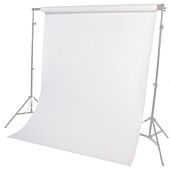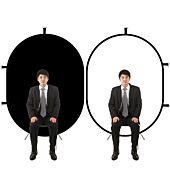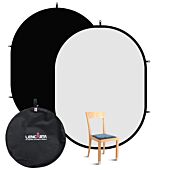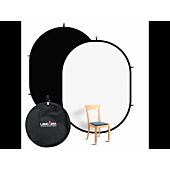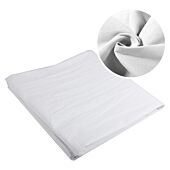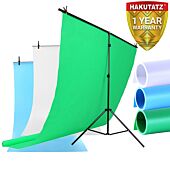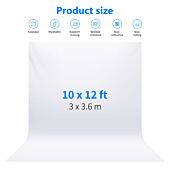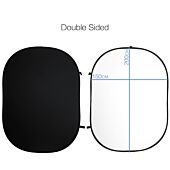white backgrounds

Shop our range of white backgrounds & backdrops for your studio or home setup. Available in a wide range of sizes, materials and colours.
- Lencarta Photography Paper Background | White | 1.35m (W) x 10m (L) | Pet, Product, Portrait PhotographySpecial Price £37.19 you save: £3 (7%) Regular Price £39.98
- NEEWER 3x3.6M Collapsible Backdrop WhiteSpecial Price £35.94 you save: £6 (14%) Regular Price £41.99
- NEEWER 1.8x2.8M Collapsible Backdrop WhiteSpecial Price £21.54 you save: £3 (14%) Regular Price £25.00
- NEEWER 3x6M Collapsible Backdrop WhiteSpecial Price £46.34 you save: £12 (20%) Regular Price £58.00
- NEEWER 2.8x4M Photography Background Photo Video Studio Polyester Backdrop Background ScreenSpecial Price £35.14 you save: £6 (14%) Regular Price £40.99
-
White Backgrounds
White backgrounds or white backdrops are one of the most popular photo backgrounds found in professional photo studios. They are particularly popular for being able to easily compose head shots, stock photos or product photography and for creating clean, highly professional portraits.
However, working with white backgrounds isn’t problem free and comes with its own set of problems.
Working with White Backgrounds & Backdrops
White backgrounds can often create a dull or off white or grey appearance once you have taken your shot. This itself isn’t that big of a problem as you can often work this out in post-production using say Adobe Creative suite, photographers are very familiar with this process, however there are a few tricks we can share with you so you can take the best possible shot on a nice clean white background.
Firstly make sure the background is properly lit, the industry practice is to light your background 2 stops higher than your subject, so if you wan to shoot at f8, set your meter to f/16 on the background.
The second tip is to make sure there is enough subject background separation, this is because your background light will be much brighter than your foreground light so you need to separate the two from your subject.
The most common techniques to achieve this are flagging or distance. Flagging is where you use a non-reflective colour or material such as black to block (flag) your background light from any area that you don’t want it to bleed light into. Distance is where you position your subject far away from the background lights so that the light doesn’t actually touch the subject.
The third tip is to use a reflective surface so that you have floor shadows in your shot, this will give the effect of your subject standing on a surface, otherwise the floor will melt into the rest of the background and it will look as if your subject is floating, which is fine if that’s what you want but otherwise, use a reflective surface to add shadows.


